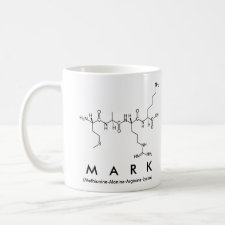
Authors: Katz A, Davis ME
Article Title: Molecular imprinting of bulk, microporous silica.
Publication date: 2000
Journal: Nature
Volume: 403
Issue: (6767)
Page numbers: 286-289.
DOI: 10.1038/35002032
Alternative URL: http://www.cchem.berkeley.edu/katzgrp/papers/nature-1.pdf
Abstract: Molecular imprinting aims to create solid materials containing chemical functionalities that are spatially organized by covalent(1) or non-covalent(2) interactions with imprint (or template) molecules during the synthesis process. Subsequent removal of the imprint molecules leaves behind designed sites for the recognition of small molecules, making the material ideally suited for applications such as separations, chemical sensing and catalysis(2-5). Until now, the molecular imprinting of bulk polymers(2-5) and polymer(6,7) and silica(8,9) surfaces has been reported, but the extension of these methods to a wider range of materials remains problematic. For example, the formation of substrate-specific cavities within bulk silica, while conceptually straightforward(10), has been difficult to accomplish experimentally(11,12). Here we describe the imprinting of bulk amorphous silicas with single aromatic rings carrying up to three 3-aminopropyltriethoxysilane side groups; this generates and occupies microporosity and attaches functional organic groups to the pore walls in a controlled fashion. The triethoxysilane part of the molecules' side groups is incorporated into the silica framework during sol-gel synthesis, and subsequent removal of the aromatic core creates a cavity with spatially organized aminopropyl groups covalently anchored to the pore walls. We find that the imprinted silicas act as shape-selective base catalysts. Our strategy can be extended to imprint other functional groups, which should give access to a wide range of functionalized materials



Join the Society for Molecular Imprinting

New items RSS feed
Sign-up for e-mail updates:
Choose between receiving an occasional newsletter or more frequent e-mail alerts.
Click here to go to the sign-up page.
Is your name elemental or peptidic? Enter your name and find out by clicking either of the buttons below!
Other products you may like:
 MIPdatabase
MIPdatabase









